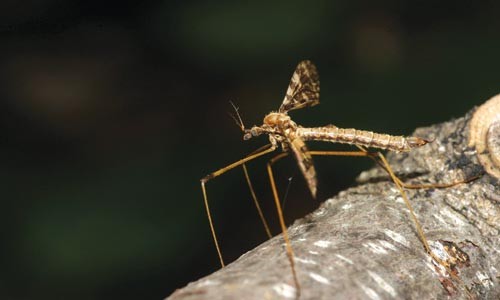When logging crews or polluters threaten wildlife habitat, the first casualty isn't always the animals and plants themselves. Sometimes it's our understanding of why spotted owls, rare salamanders or old-growth trees are important in the first place.
And if you think it's hard to rally support for saving polar bears or giant sequoias, try cheerleading for an endangered insect. To people who believe we have more than enough bugs already, protecting a buzzing ground for insects seems a poor reason to halt a shopping center or strip-mine.
That's why this winter, an excellent field-trip involves a little gallery in the Carnegie Museum of Natural History. Lord of the Crane Flies occupies the hallway just outside the R.P. Simmons Gallery, which is currently hosting a big exhibit on whales. It's easy to be impressed by animals with hearts large enough for humans to crawl inside. But Lord of the Crane Flies reminds us why we should care about animals we wouldn't notice if one landed on our heads.
The exhibit of photographs, drawings and specimens details the work of one of the world's top crane-fly experts: Chen Young, associate curator of the museum's world-famous invertebrate-zoology department. Shortly after enrolling in the University of Kansas to study entomology, in 1970, the Taiwan native got "hooked" on this primitive insect's sheer diversity. Traveling the world for research, he grew to appreciate how important crane flies are to ecosystems -- and to humans.
Crane flies are the most abundant and diverse flies on Earth. There are some 15,000 species, about 400 in Pennsylvania alone. All have long bodies; narrow, translucent wings; and long hind legs that trail in flight like those of their namesake bird. But as seen in a box of pinned specimens, crane flies vary widely in length, from an eighth of an inch to two-and-a-half inchers resembling small dragonflies. And they span the globe, from jungle-dwellers to a wingless species that lives upon snow.
Thanks to their abundance, crane flies -- both the larvae and the short-lived adults -- are ecologically important as food for other animals, mostly birds, frogs, snakes and spiders. (One luminous color photo shows a crane fly succumbing to a fearsome jumping spider.) If crane-fly numbers dwindled in the Arctic, for instance, it would endanger the millions of birds who nest there.
Crane flies also pick up the trash: Their larvae are detrivores -- eaters of dead plant matter. (The short-lived adults simply breed and die.) Thus they're one of the countless tiny organisms who consume fallen leaves and rotting wood, breaking it down into new soil while recycling its energy into food for other critters.
Without such free "environmental services," the planet would quickly bury itself in waste -- and starve. Yet we take these services for granted, polluting and paving over the habitats that make them possible.
Like many aquatic and semi-aquatic insects, crane flies are good indicators of environmental health. "Some species are very picky about their environment," says Chen. If their numbers drop, something's wrong. In fact, one species, Tipula williamsiana, was thought to be regionally extinct until Chen's team discovered a population near the pristine headwaters of Powdermill Nature Reserve's namesake creek: "We realized they just need to have this very clean water to be able to survive," Chen says.
The survival of as many species as possible is at the heart of what's called "biodiversity," and undisturbed, unpolluted habitats are the key to preserving it. As famed entomologist Edward O. Wilson has written, "[A]n ecosystem kept productive by multiple species is an ecosystem less likely to fail."
Chen, 61, is currently identifying species from the Dominican Republic, where he's already found 75 previously unknown to science. But he also collects crane flies in his own Gibsonia backyard, and is eager to dispel the biggest myth about his specialty insect: Though they look like mosquitoes, they don't bite.
"People say, 'I saw a giant mosquito.' Then I know they saw a crane fly," he says. And he emphasizes: "They are not big mosquitoes. They don't bite. Don't smash them."















